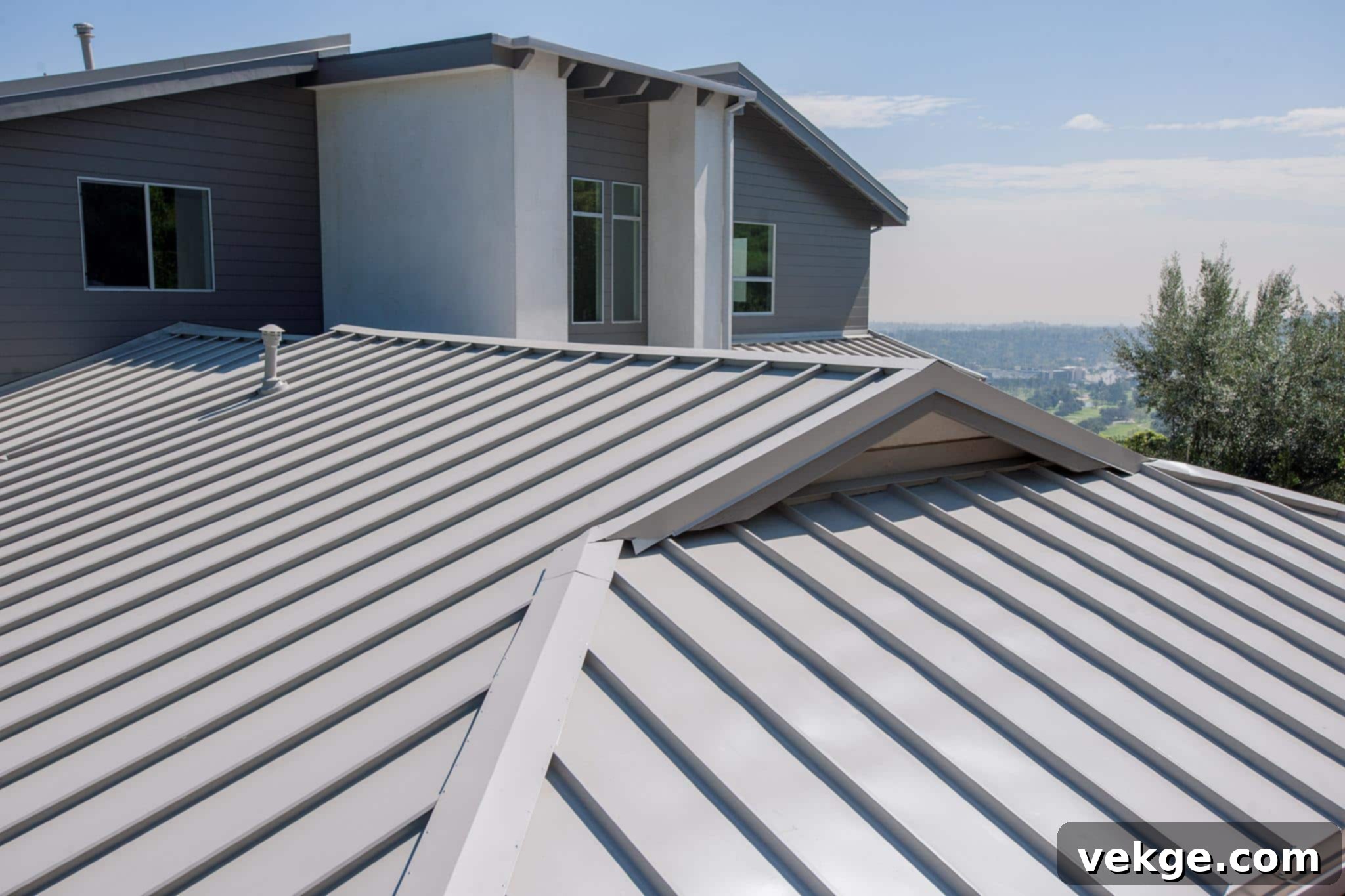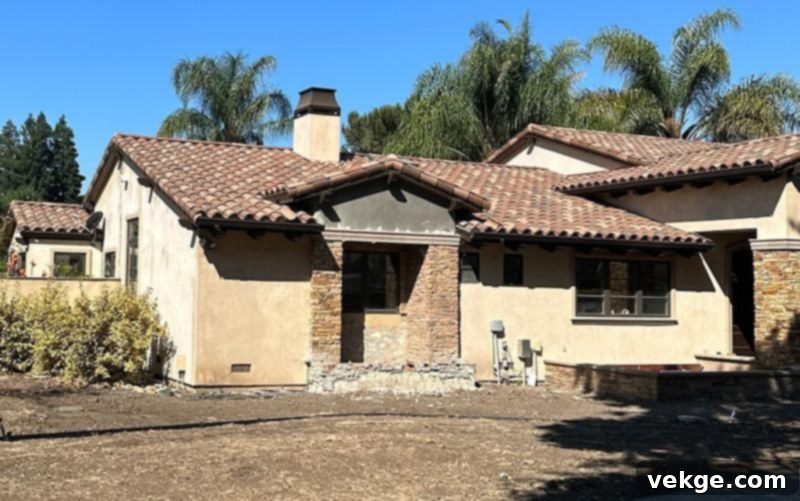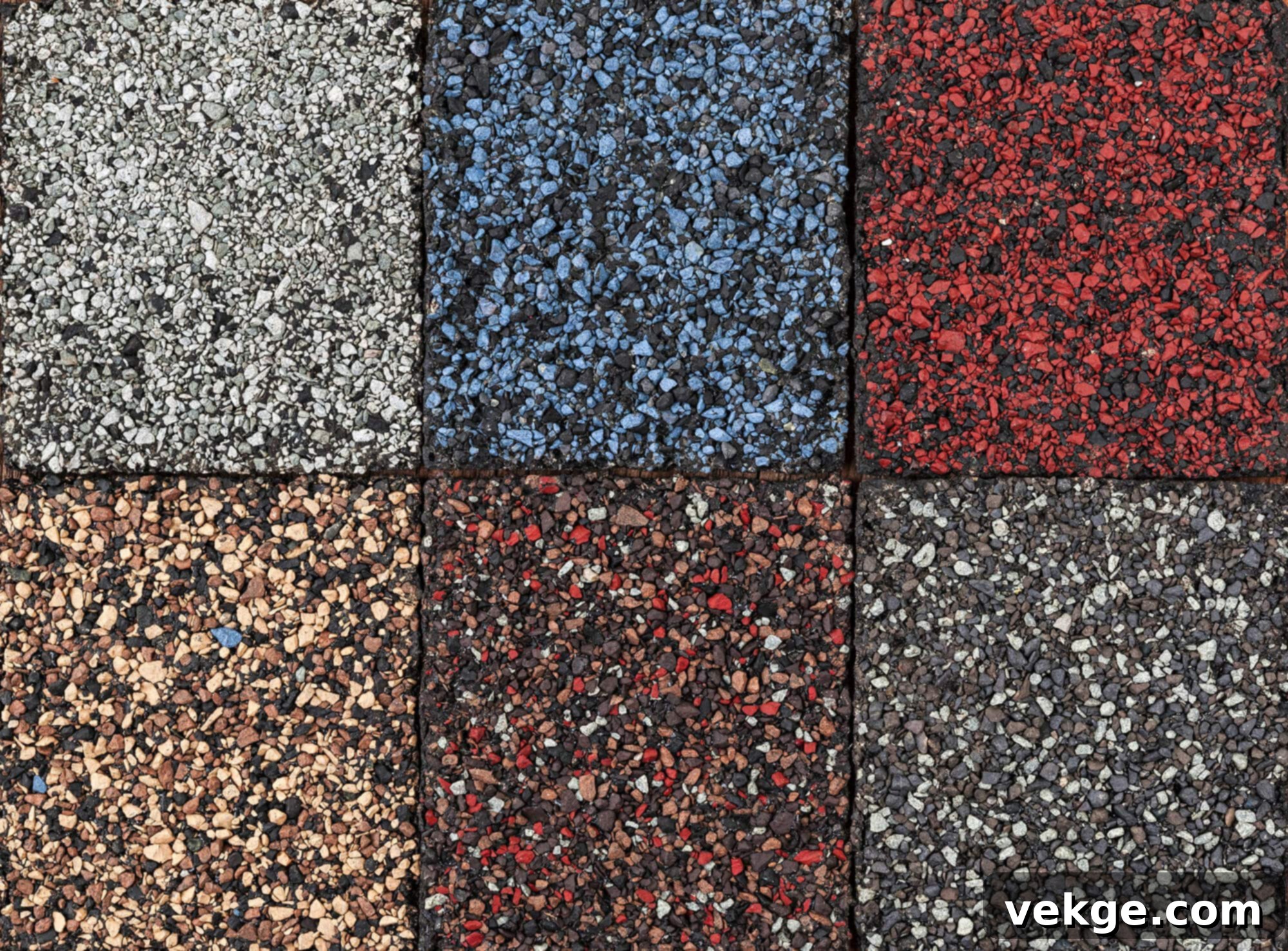The Ultimate Guide to Choosing the Best Roofing Materials by Climate: Local Roofers & Expert Tips
Your roof is much more than just a protective covering for your home; it’s a critical component that significantly influences your property’s energy efficiency, overall home value, and indoor comfort. However, selecting the right roofing material isn’t a one-size-fits-all decision. The unique characteristics of your local climate play an enormous role in determining what will perform best and offer the most longevity and protection. This comprehensive guide will delve into how different regions necessitate distinct roofing solutions, helping you understand your options and connect with trusted local roofers in various states to make the most informed choice for your home.
Understanding the impact of your climate on your roof is paramount. A roof designed for heavy snow loads will underperform in a hurricane zone, just as a heat-absorbing roof will struggle in a scorching desert environment. Making an educated decision on materials can lead to substantial long-term savings on energy bills, reduce maintenance costs, and provide superior protection against the elements, ultimately enhancing your home’s durability and curb appeal for decades to come.
Roofing Solutions Tailored by Location and Climate
Hot and Dry Climates: Battling Intense Heat and UV Rays
In regions characterized by scorching sun, high temperatures, and minimal rainfall, the primary challenge for your roof is heat absorption and intense UV radiation. Materials that reflect sunlight and can withstand prolonged exposure to high temperatures are essential. Additionally, fire resistance often becomes a crucial consideration in these arid environments.

Best Roofing Materials for Hot & Dry Climates:
- Clay Tiles: Renowned for their exceptional heat-reflecting properties, clay tiles are a top choice for hot and dry climates. Their natural curvature and color help to deflect solar radiation, keeping your attic and home cooler. Furthermore, clay tiles are incredibly durable, offering a lifespan of 50 years or more, and are naturally fire-resistant. They also lend a timeless, Mediterranean, or Spanish architectural aesthetic to homes.
- Concrete Tiles: Similar in performance to clay tiles, concrete tiles also offer excellent durability, heat reflection, and fire resistance. They are often more cost-effective and lighter than clay, making them a versatile option. Concrete tiles can be manufactured in a wide array of colors and profiles, mimicking slate or wood shakes, providing aesthetic flexibility while delivering robust performance.
- Metal Roofing: Light-colored metal roofs, particularly those with cool-roof coatings, are highly effective at reflecting sunlight and reducing heat gain. Metal is also inherently fire-resistant and incredibly durable, capable of withstanding high winds and requiring minimal maintenance. For optimal performance in hot climates, proper ventilation is absolutely critical to allow any trapped heat to escape, maximizing the roof’s cooling benefits and improving energy efficiency.
Locations & Expert Roofing Companies for Hot & Dry Climates:
- Fayetteville, AR: With its often hot and somewhat dry climate, homeowners in Fayetteville should prioritize roofing materials that actively combat heat gain and contribute to a cooler interior. Heritage Roofing & Repair, a highly reputable roofing company in Fayetteville AR, specializes in installing energy-efficient roofing solutions. They understand the local climate challenges and can guide homeowners toward options like light-colored asphalt shingles, metal roofing, or even concrete tiles that provide superior thermal performance and long-term durability against intense summer heat.
- San Jose, CA: Beyond managing significant heat, residents of San Jose and surrounding areas must seriously consider fire resistance due to wildfire risks common in California. Top Tier Roofing, experienced San Jose roofers, offers a range of robust roofing options tailored for this dual challenge. Their expertise includes installing metal roofing systems that are not only highly fire-resistant but also excellent at reflecting solar heat, contributing to lower cooling costs and enhanced safety for your home. They are also adept at navigating local building codes that often emphasize fire safety.
Cold Climates: Withstanding Snow, Ice, and Freezing Temperatures
In stark contrast, cold climates present an entirely different set of demands for your roof. Here, the primary concerns are heavy snow loads, ice dam formation, freeze-thaw cycles, and the need for superior insulation to retain heat. A robust, watertight roof that can shed snow and ice efficiently is paramount.
Best Materials for Cold Climates:
- Asphalt Shingles: Widely popular and affordable, asphalt shingles are a practical choice for cold climates. Modern architectural or laminated shingles are designed to handle heavy snow loads and offer good insulation properties. They are flexible enough to withstand temperature fluctuations and are available with enhanced impact resistance for areas prone to hailstorms. Proper installation with an ice and water shield is crucial to prevent leaks from ice dams.
- Slate Roofing: While a significant investment, slate roofing is incredibly durable and ideal for heavy snow and extreme cold. Its natural density means it’s impervious to moisture, freeze-thaw cycles, and fire. Slate roofs can last well over a century with minimal maintenance, making them an excellent long-term solution for homes where longevity and classic aesthetics are highly valued.
- Standing Seam Metal Roofing: This type of metal roofing is exceptionally durable and excels at shedding snow and ice due to its smooth surface and vertical seams. This efficient shedding significantly reduces the risk of dangerous snow buildup and the formation of ice dams, which can cause severe water damage. Metal roofs are also resistant to fire and strong winds, offering a modern, low-maintenance solution for harsh winters.
Locations & Experienced Roofers for Cold Climates:
- Clive, IA: Homeowners in Clive face challenging conditions including bitterly cold temperatures, heavy snowfall, and the occasional hailstorm. Dealing with these elements effectively requires robust and well-insulated roofing materials. Smart Home Exteriors, a trusted Clive roofing contractor, specializes in providing solutions engineered to withstand harsh Midwestern winters. They offer durable options like high-grade asphalt shingles with enhanced impact resistance, and standing seam metal roofing, which effectively sheds snow and ice, helping to prevent ice dam formation and ensuring your home remains warm and dry through the coldest months.
Wet and Humid Climates: Combating Moisture and Algae Growth
For regions with high humidity, frequent rainfall, and warm temperatures, the main enemy of your roof is moisture. This climate encourages the growth of mold, mildew, and algae, and increases the risk of wood rot and leaks. High wind resistance is also a key factor, especially in coastal or hurricane-prone areas.
Best Roofing Materials for Wet & Humid Climates:
- Modified Bitumen Roofing: Often used for low-slope or flat roofs, modified bitumen is a highly effective waterproof membrane. Its seamless application provides an excellent barrier against heavy rain and humidity, making it ideal for commercial properties or residential homes with specific architectural styles in wet climates. It’s durable and designed to resist water penetration effectively.
- Asphalt Shingles with Algae-Resistant (AR) Coating: Standard asphalt shingles can quickly develop unsightly black streaks from algae (Gloeocapsa magma) in humid environments. Algae-resistant shingles are infused with copper granules that inhibit algae growth, keeping your roof looking cleaner and extending its aesthetic lifespan. Proper attic ventilation is also crucial to reduce moisture buildup, which further discourages mold and mildew.
- Metal Roofing: When properly coated and installed, metal roofs are inherently resistant to moisture buildup, rust (with appropriate coatings), and the growth of mold and mildew. Their smooth surface allows rain to quickly wash away debris and spores. Furthermore, metal roofing offers superior durability and exceptional wind resistance, making it an excellent choice for regions prone to tropical storms or hurricanes.
Locations & Roofing Experts for Wet & Humid Climates:
- Naples, FL: With its high humidity, abundant rainfall, and constant threat of hurricane-force winds, selecting a roof that can withstand severe weather events is absolutely critical for homeowners in Naples. Ocean Group Roofing, a leading Naples roofing company, specializes in providing robust roofing materials and installation techniques designed to resist extreme moisture, high winds, and salt-air corrosion. They offer solutions like metal roofing with enhanced fastening systems and impact-resistant, algae-resistant shingles that meet strict local building codes for hurricane protection, ensuring maximum safety and longevity for your home.
Mixed Climates: Versatility for All Seasons
Some regions experience a broad spectrum of weather conditions throughout the year—hot, humid summers; cold, snowy winters; and everything in between. In these mixed climates, the ideal roofing material must be versatile, durable, and capable of performing reliably under diverse and sometimes rapidly changing weather conditions.

Best Materials for Mixed Climates:
- Clay Tiles: Surprisingly versatile, clay tiles perform well in mixed climates. Their thermal mass helps regulate indoor temperatures year-round—reflecting heat in summer and providing a degree of insulation in moderate cold. They are also incredibly durable and resistant to most weather extremes, from heavy rains to moderate snow.
- Asphalt Shingles: Thanks to their adaptability and wide range of styles and performance characteristics, asphalt shingles remain a popular and cost-effective choice for mixed climates. Different grades and designs can offer resistance to hail, wind, and algae, making them a balanced option for areas experiencing varied weather patterns. Their widespread availability and ease of installation also make them a practical choice.
- Metal Roofing: Once again, metal roofing proves its versatility. It performs exceptionally well in all climates when properly installed. Its reflective properties help in summer, while its durability handles winter elements. With a variety of profiles and colors, metal roofs can complement any architectural style while providing long-lasting, energy-efficient performance regardless of the season.
Locations & Expert Roofers for Mixed Climates:
- Asheville, NC: Experiencing a dynamic climate that includes warm, humid summers, significant rainfall, freezing temperatures, and occasional snowfall, homeowners in Asheville need genuinely versatile roofing solutions. Southern Classic Roofing, professional roofers in Asheville NC, are experts at navigating these diverse climatic demands. They can recommend and install the best materials that offer balanced performance—providing heat reflection and moisture resistance in summer while ensuring robust protection against cold and snow in winter. Their knowledge of local weather patterns ensures your roof is equipped for anything nature throws at it.
Key Factors to Consider Beyond Climate: A Holistic Approach to Roofing
While climate is a dominant factor, several other considerations should influence your roofing material choice. A holistic approach ensures your new roof meets all your needs for safety, aesthetics, and long-term performance.
- Wind Resistance: In areas prone to hurricanes, tornadoes, or strong winds, selecting materials with high wind uplift resistance is non-negotiable. Look for roofing systems, like interlocking metal panels or specialized shingles with enhanced adhesive strips and fasteners, that are rated to withstand specific wind speeds, often mandated by local building codes. Investing in such materials can prevent catastrophic roof failure during severe weather events.
- Hail Resistance: For regions known for frequent hailstorms, impact-resistant materials are crucial. These often include specialized polymer shingles, some types of metal roofing, or rubberized asphalt shingles that can absorb impacts without cracking or deforming. These materials typically carry a Class 4 UL 2218 rating, indicating the highest level of hail resistance, which can also lead to insurance premium reductions.
- Fire Resistance: In areas with a high risk of wildfires, such as many parts of California or the arid West, fire-resistant roofing options are paramount for homeowner safety and property protection. Materials like metal, concrete tile, and clay tile are naturally non-combustible. Even asphalt shingles are available with a Class A fire rating, offering superior resistance to external fire spread. This consideration is vital for defensible space strategies around your home.
- Aesthetics and Architectural Harmony: Your roof constitutes a significant portion of your home’s visible exterior, playing a critical role in its curb appeal and overall architectural style. Choose a material whose color, texture, and profile complement your home’s design. Whether you desire the rustic charm of wood shakes (or their synthetic alternatives), the classic elegance of slate, the modern sleekness of metal, or the traditional look of asphalt, ensure it aligns with your personal taste and neighborhood aesthetics while meeting all functional requirements.
- Insulation and Ventilation: Beyond the roofing material itself, the underlying insulation and proper attic ventilation are vital for both energy efficiency and roof longevity in any climate. Good ventilation prevents heat buildup in summer (reducing cooling costs) and moisture accumulation in winter (preventing ice dams and mold), directly impacting the lifespan of your roof and your home’s comfort. Discuss these critical components with your local roofer.
- Lifespan and Warranty: Consider the expected lifespan of different roofing materials, which can range from 20 years for some asphalt shingles to over 100 years for slate. A longer lifespan often correlates with a higher initial investment but lower long-term costs. Always review the manufacturer’s warranty and the contractor’s workmanship warranty to understand your protection for decades to come.
- Maintenance Requirements: Different roofing materials require varying levels of maintenance. Metal roofs are generally low-maintenance, while some natural materials like wood shakes or certain asphalt shingles might require more periodic cleaning or inspection. Factor in the time and cost associated with maintaining your chosen roof over its lifetime.
- Cost-Effectiveness: While initial cost is a factor, focus on the overall cost-effectiveness over the roof’s lifespan. A cheaper material might require more frequent replacement or higher energy bills, negating initial savings. Balance upfront investment with long-term durability, energy savings, and maintenance costs.
- Local Building Codes and Regulations: Always ensure that your chosen roofing material and its installation comply with all local building codes and homeowner association (HOA) regulations. These codes are in place for safety, durability, and often dictate specific requirements for wind, fire, or seismic resistance. Your local roofing contractor will be invaluable in navigating these requirements.
Local Roofing Solutions and Quality Materials: Your Path to a Perfect Roof
Choosing the right roofing material is one of the most significant decisions a homeowner will make regarding their property’s protection and long-term value. This decision should always be meticulously based on your local climate, combined with a thorough understanding of material properties, durability, energy efficiency, and aesthetic appeal. By knowing how different materials perform in varying environments, you can ensure your home receives a roof that is not only long-lasting and energy-efficient but also optimally protected from the specific weather conditions prevalent in your region.
The expertise of local roofing contractors cannot be overstated. They possess invaluable knowledge of regional weather patterns, local building codes, and the best materials that thrive in your specific environment. Engaging with reputable local roofers means you receive personalized advice, access to quality materials, and professional installation that stands the test of time. Whether you’re navigating the intense heat and fire risks of Fayetteville or San Jose, facing the heavy snows and freezing temperatures of Clive, combating the high humidity and hurricane threats of Naples, or seeking a versatile solution for Asheville’s mixed climate, there is a perfect roofing solution waiting for your home. Invest wisely in your roof; it’s an investment in your home’s future.
